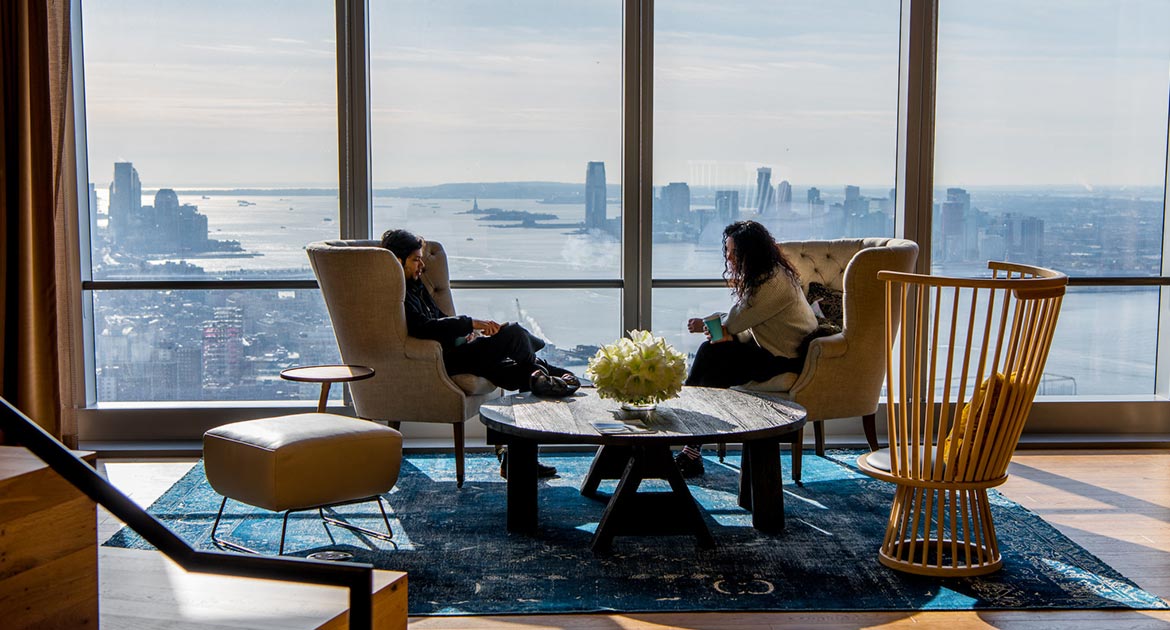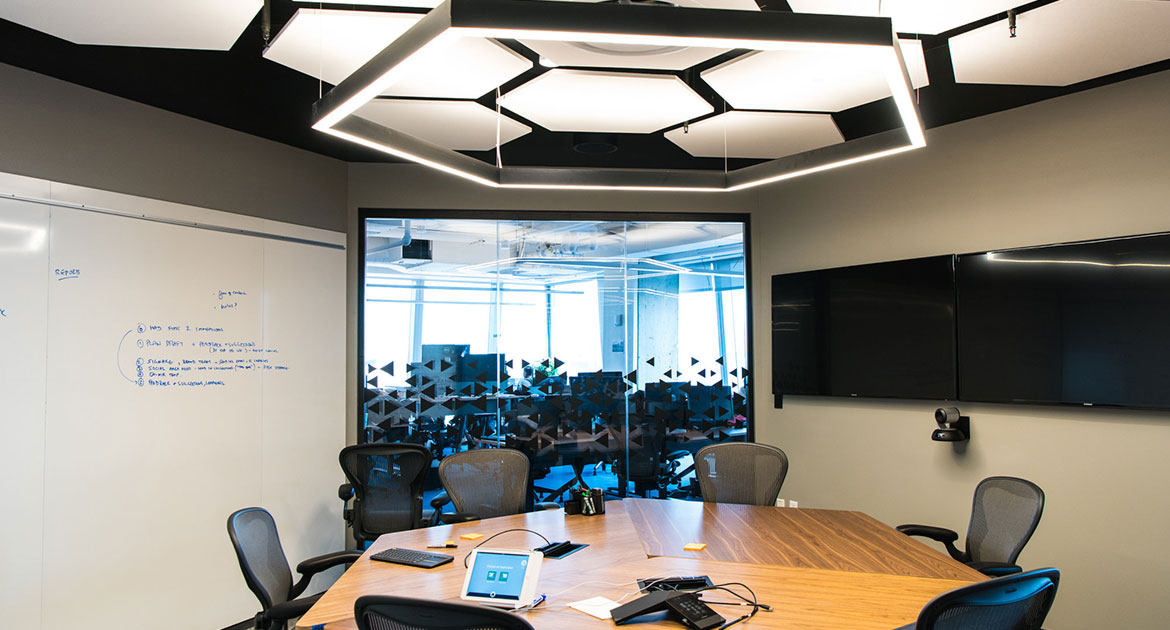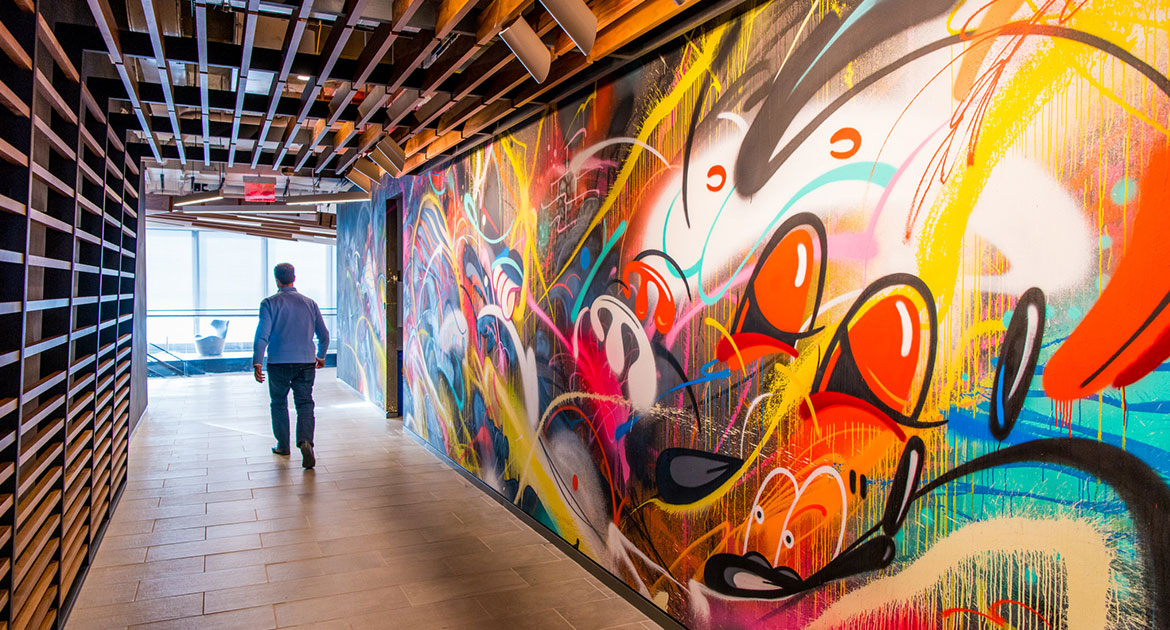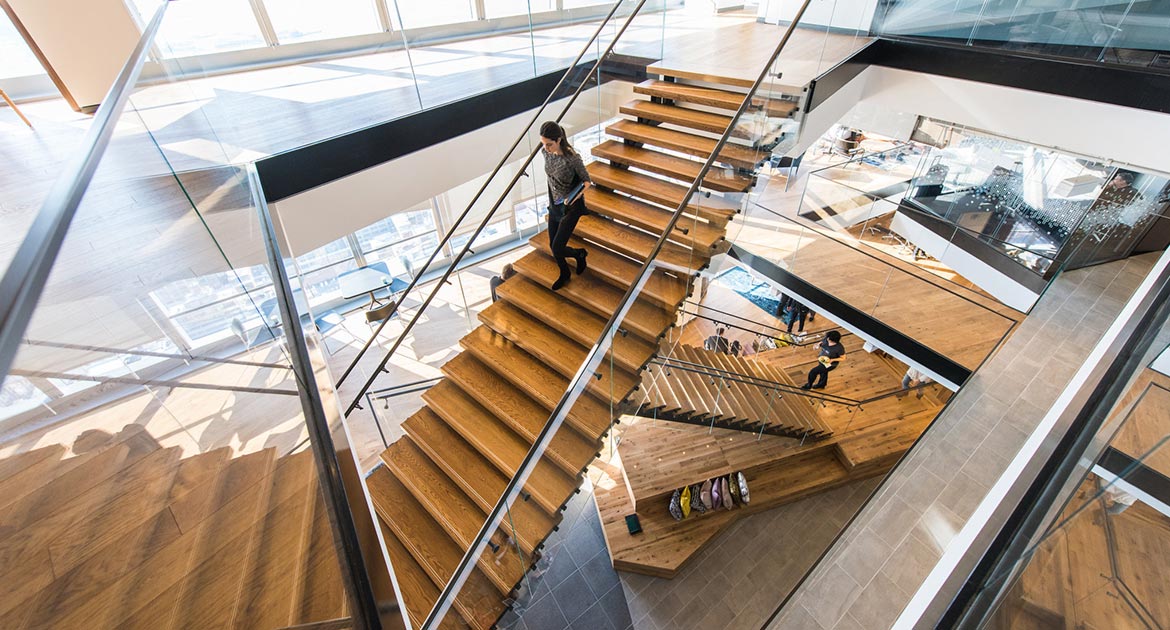A very different type of workspace has been created for The Boston Consulting Group (BCG) at their new home in New York at 10 Hudson Yards on Manhattan’s far West Side. Based around the idea of ‘neighbourhoods’ for practice or industry clusters, it provides shared spaces for both their consultancy and non-consultancy people (Business Services Team or BST) in an environment that promotes community and interaction, with a focus on energy and activity-based spaces.
As technology pushes us to be more virtual, what is the role of the office in the 21st Century? The idea that work is something you do and not a place that you go informs a new paradigm shift for the workplace – it has to have a better reason for being than just a repository for desks and paper. As a place for people, both employees and clients, it has to work hard to ‘pull’ people in – there needs to be a compelling reason to come to work.
The idea of space that is a destination and that provides an exciting place to be were two of the guiding principles behind the new BCG workplace. Based on user feedback and research, there were five key attributes to achieve success: air quality, daylight, good acoustics, great coffee and food. The new office needed to be a platform for BCG in the city.
“The office of the future is not a place where people come just to do work. It’s a place to make personal connections with colleagues,” says Ross Love, The Boston Consulting Group’s managing partner for New York. “We wanted to create a significantly higher level of unplanned collisions to transform our office culture.”

A Digital Workplace
Just as Apps and digital ‘platforms’ have changed the way we interact outside the office, so a new BCG App was developed to change the experience inside workspace, providing a map-based space reservation system, desk panels with photo frames, news, events, a help section, receipt scanner, and crucially, the ability to find a colleague. This collision between people and space is creating an ‘App centric workplace’ where people who are in can be identified and found, and a ‘who’s in’ that shows, for example, people that you started with who are currently in the building. An App centric approach that in effect creates a physical social network facilitates the ‘bump’ factor that people want – engineering serendipity is a key ingredient in future high performing workplaces.
BCG staff can enter the building using the Bluetooth enabled HID Global Mobile Access app. Once in, they can use the BCG NY office App to book a space to work based on what they need to do – an activity based approach – or just check in using the iPad mini screen at each workstation. This can then be personalised to, for example, show pictures from a user’s smart phone.
People are able to morph the space – a ‘user defined environment’. Elegance and ease of use were key ingredients. An ‘Apple-esque’ approach to aesthetic not usually experienced in office design was undertaken by BCG and every detail from cable colour to clutter was considered. The end result is an environment that is minimalist, ergonomic and utilitarian – but not sterile – by design, devoid of the usual technology clutter of messy cables, desk phones and laptop docks.
A paperless space
BCG had a vision for a ‘paperless-first’ space, and meeting spaces all have high quality screens to display PowerPoint decks or other content. Portable Surface Hub screens are available to facilitate live annotation and enhanced collaboration. While at the desk, a high-quality LG curved white 34” ultra-wide monitor provides a fabulous ‘digital workplace’. New ‘kidney shaped’ desks were piloted and implemented to create an optimal ergonomic experience with the move to curved displays.
The technology, as well as being less visible, is also more integrated. People carrying laptops and mobile phones can integrate them with the space. Rather than fixed video conferencing ‘end points’ in convertible offices, the laptop is used as the end-point with Cisco software and an enhanced usb connection to a Devio unit that then provides access to the camera, microphone, screen and speaker in an acoustically optimised environment.
There are no desk phones or the usual conference call ‘speaker phones’ on tables. Instead Cisco Jabber ‘unified communications software’ was deployed to both laptops and mobile cell phones. In the case team rooms there is a full ‘immersive’ Cisco VC experience so that remote participants feel as though they are in the same space. The space is a ‘WiFi first’ space – in effect a ‘cableless office’ – and the default is that people connect wirelessly for voice and data. An advanced touch panel surface using laser phosphor display screen technology provides a focus in the main multi-purpose room (MPR) on the central floor adjacent to a large café area.
The café, which offers food and beverages as well as informal work and meeting space, is the nexus of the office, the heart and nerve centre. Nearby are a concierge desk (complete with large Microsoft Surface Hub) for client ‘meet and greet’ and a main internal staircase. There is no reception desk and visitors experience a very different sense of arrival. This environment can be morphed to allow TED-like events and entertainment along with live streaming and presentation facilities, centered on a transparent OLED screen

A User Defined Workplace
Space that can be changed was the foundation of concepts such as the ‘convertible’ office that can be adapted to suit three use cases (partner use, ad hoc meeting and video conference) with a choice between two styles of convertible, one with Vitra furniture and the other with Knoll furniture that can be adapted by the user. When partners are not in the office anyone can reserve and use their convertible. Elsewhere, huddle rooms and multi-purpose rooms (MPRs) can be used for a variety of scenarios. Conversely, dedicated space for teams working on cases were designed to create a flexible, high tech and secure home.
Wellbeing was a key ingredient and movement and walking are enabled as well as the ability to raise desks and work standing up – all key ingredients for a healthy office. 75% of the open-space workstations can be raised to allow people to work on their feet. In addition to a wellness space, dedicated rooms with Lifespan treadmill desks provide a place to walk and work while enjoying the skyline of Manhattan.
Speaking about UnWork’s role, Ross Love, Senior Partner and Managing Director, and Managing Partner for New York, said; “UnWork really helped us to crystallise our vision, challenging all our assumptions and helping us to consider all avenues and the ‘art of the possible’. Through a collaborative approach and co-creation with our consulting team, they helped shape solutions and allowed us to innovate and have the confidence to take difficult decisions. Philip and his team made us think and pushed us hard to define the future of work for BCG.”
Key to the vision that Ross Love articulated was the idea of a ‘collision coefficient’ – a way of measuring interaction. The workplace facilitates this interaction through the idea of fluidity – encouraging movement through portable technology that is ‘untethered’ from the desk, ease of vertical circulation through two imposing staircases, pull factors such as great coffee and specialist spaces and the sharing of work space so that people behave in an agile way. As with most management consultancies, the ‘Friday factor’ means people are in more at the end of the week, and so the office has to provide the flexibility to flex with demand.

Impact
Ross Love’s vision was captured in an article in Fortune magazine. Here he discusses the ideas of bringing people together and measuring success through a ‘collision coefficient’. And this has been achieved in an environment which has changed behaviours on day one, engineering a dramatic rise in chance encounters and informal meetings and conversations. As well as cultural change, the approach has shaved 32% off floor space requirements per person delivering a significant cost saving. And the firm has seen a dramatic rise in cross over job acceptances because of the new space.

